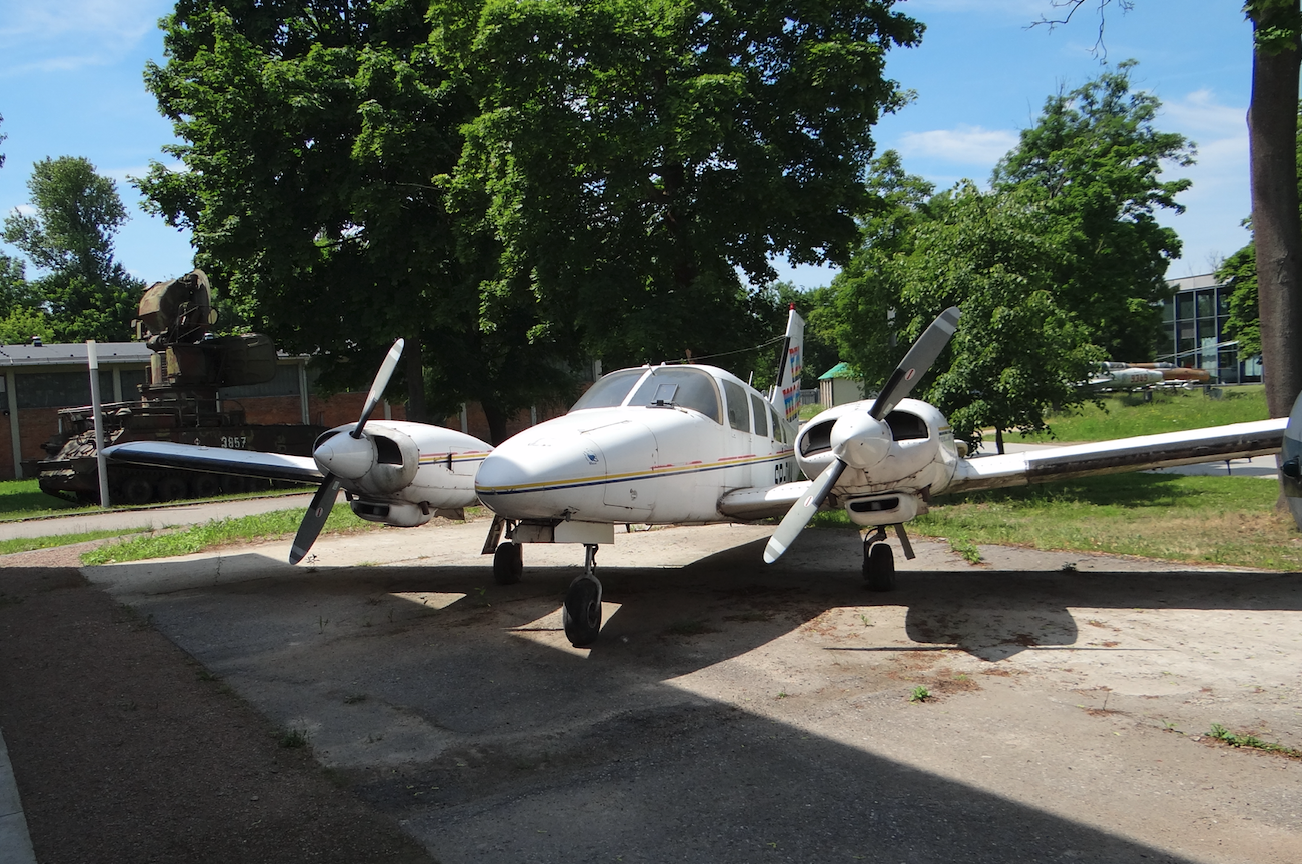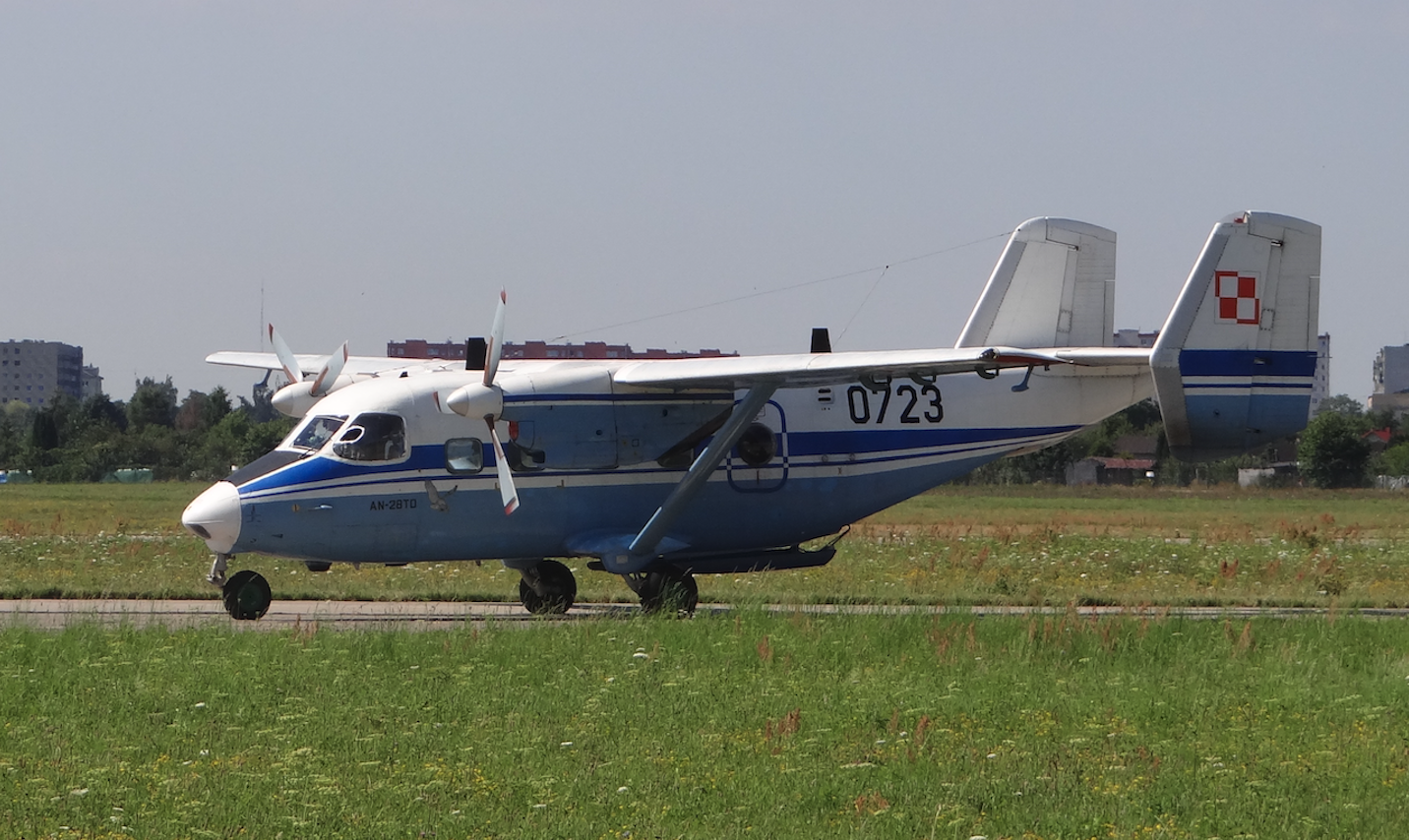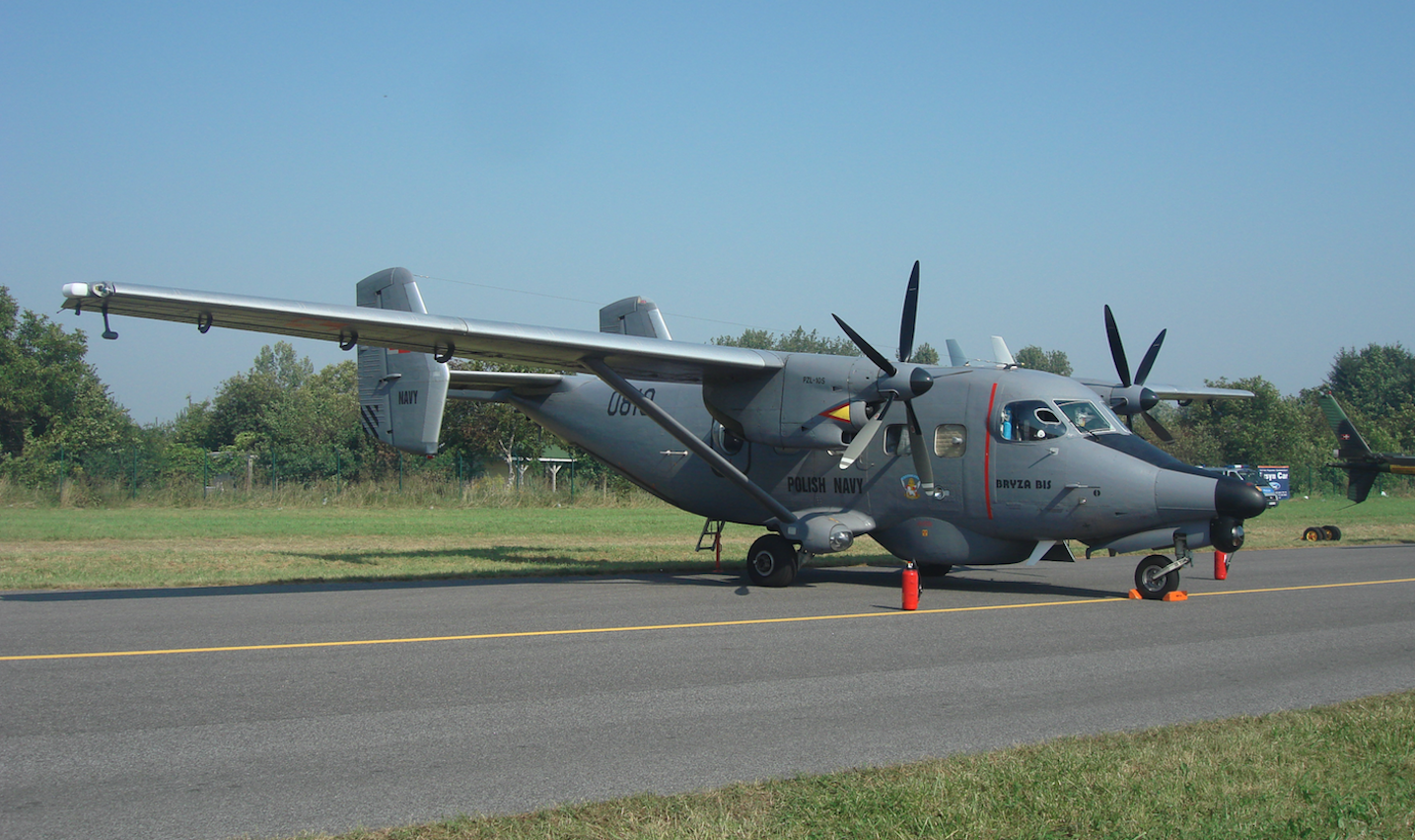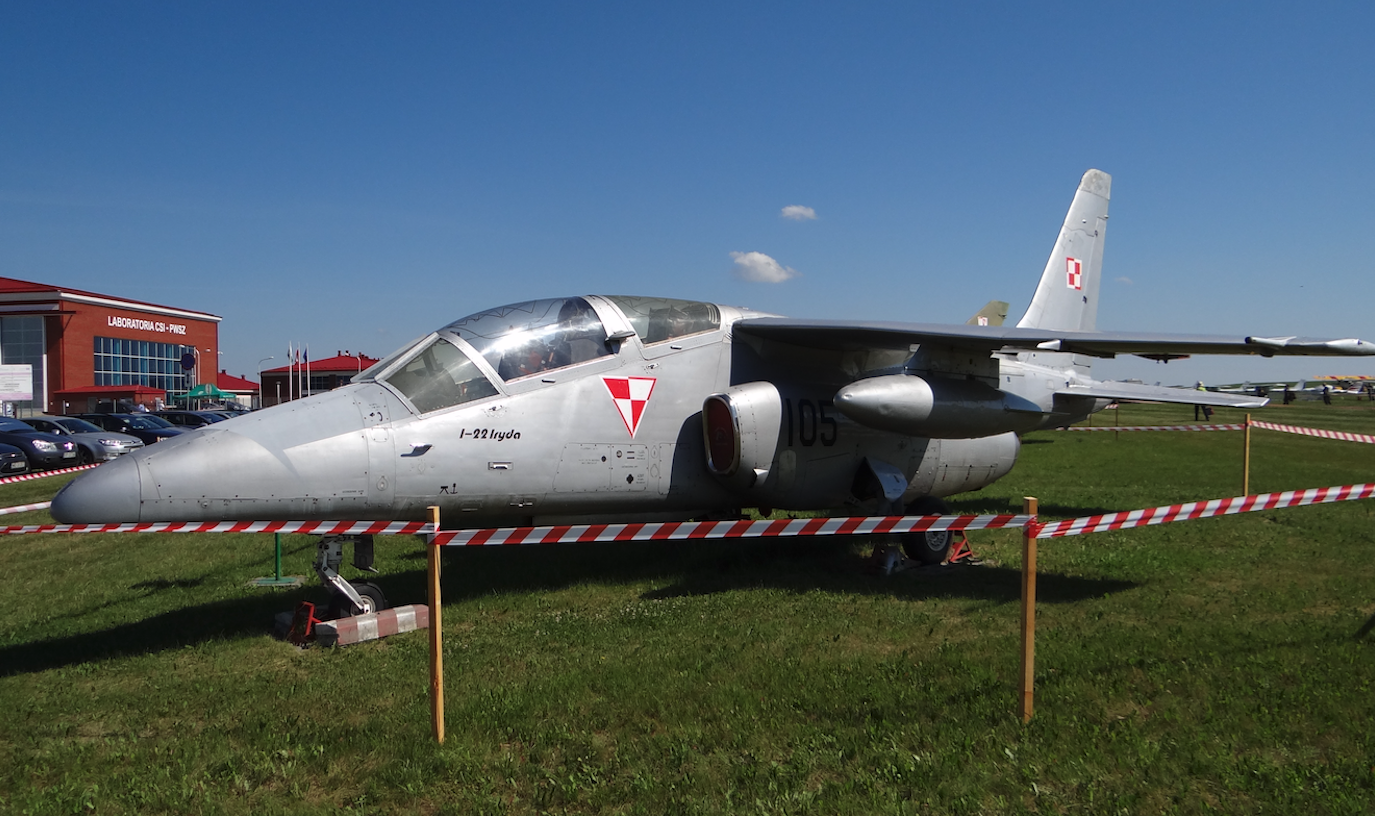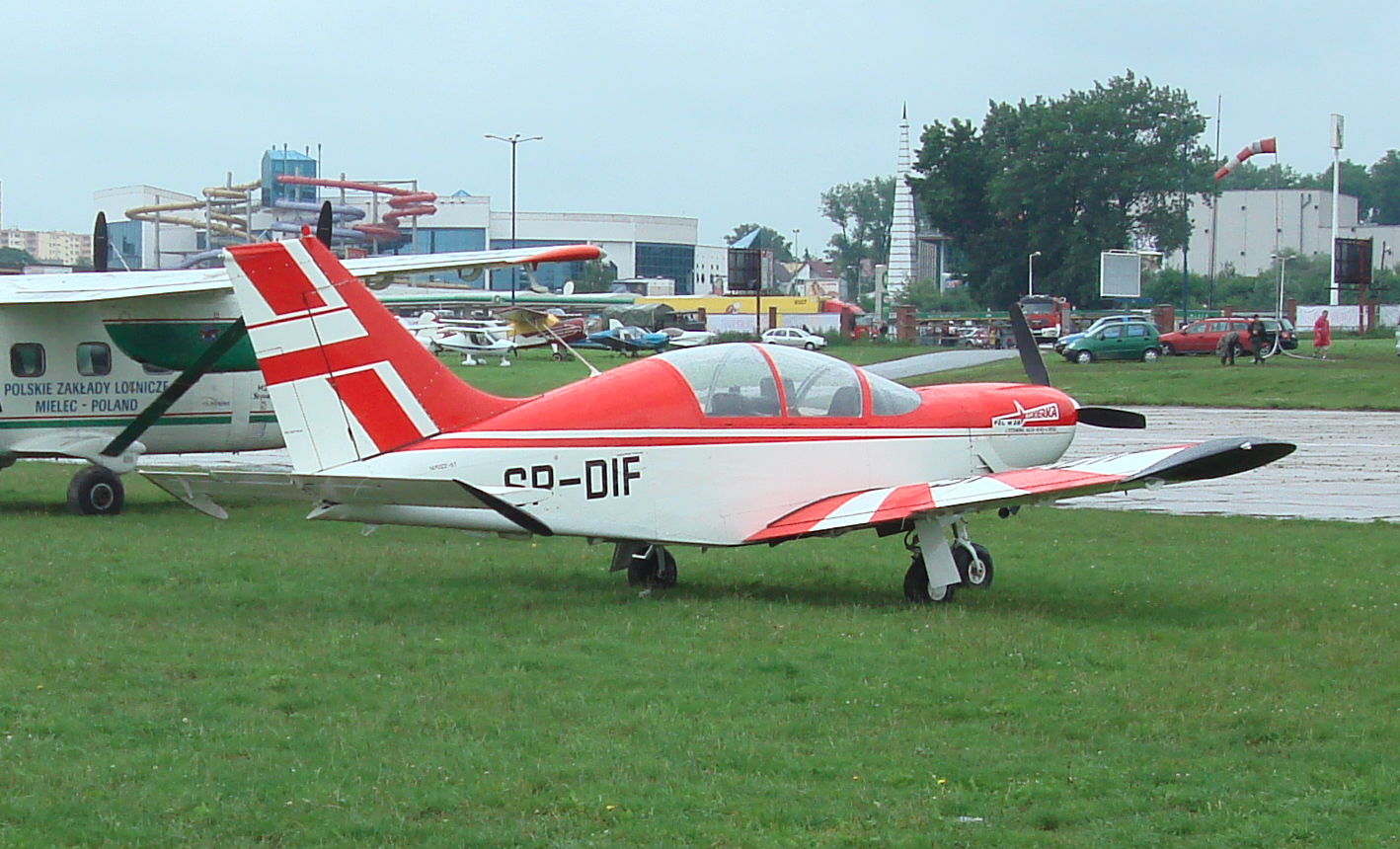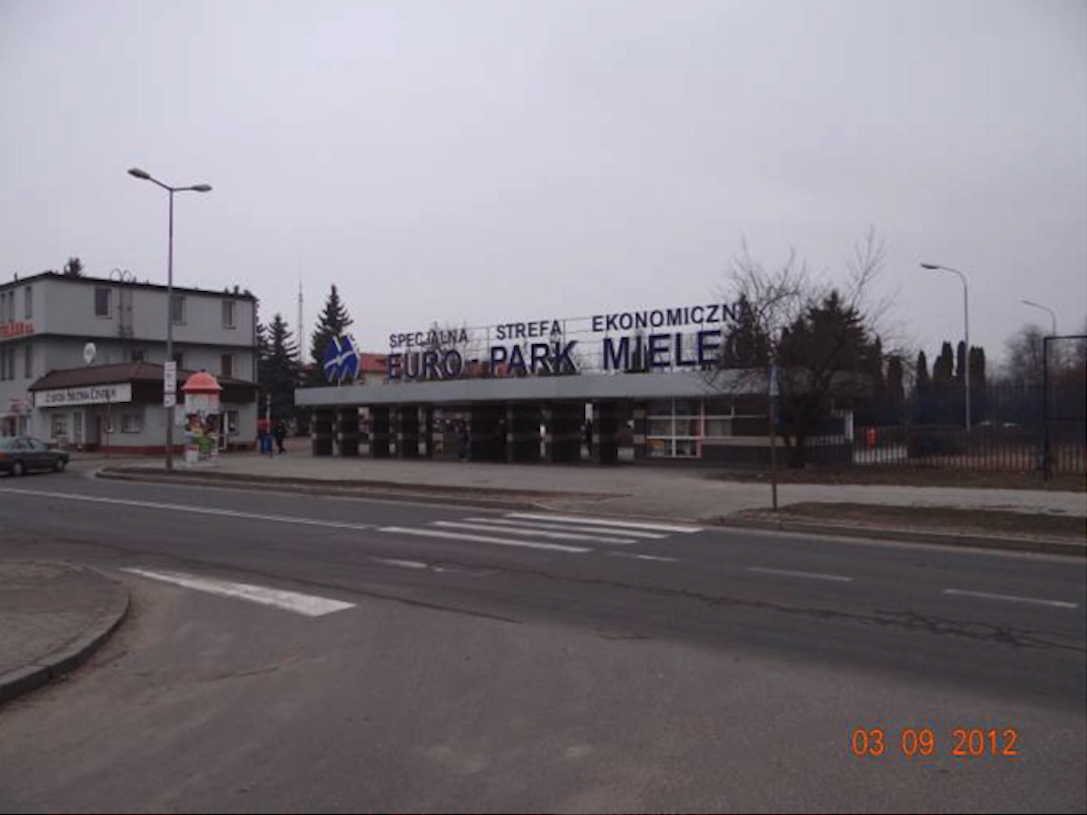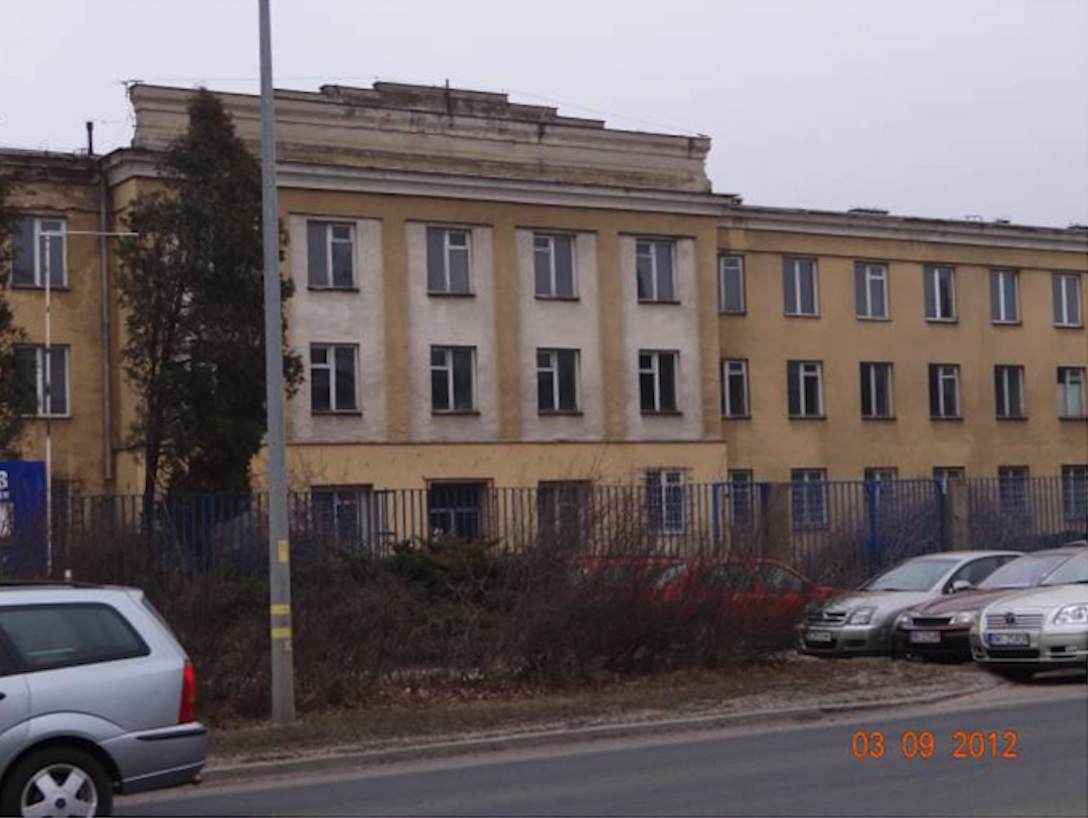Kraków 2012-03-20
Państwowe Zakłady Lotnicze – Communication Equipment Factory – Mielec.
PZL M-19 passenger plane.
In 1977, Polskie Zakłady Lotnicze concluded an agreement for the license construction of the Piper PA-34 Seneca, known as the PZL M-20 Mewa, in Poland. In addition to the PZL license, they also established cooperation with the Piper Aircraft Company in the design of a new short-range passenger plane, known as a regional plane. The new machine was to be based on the Piper PA-35 Pocono model, capable of carrying 18 passengers. The new plane was to be larger than it and could carry 34 passengers. An initial breakdown of the work to be done was agreed, and the Piper plant offered assistance in financing the project and supplying the necessary materials. The plane was to be built in versions; passenger, freight and availability. Ultimately, in Mielec, under the supervision of engineers Stanisław Jachyr and Tadeusz Widełek, work on a plane that was smaller than initially planned began. Unfortunately, the Kremlin did not like too much Polish-US rapprochement, which put pressure on the termination of the program in cooperation with the Americans. Ultimately, the US side withdrew from financing further works, which resulted in the cancellation of the entire program in 1979.
Please do not confuse the PZL M-19 with the PZL-19 from 1932.
PZL M-17 training and sports plane. 1977 year.
The prototype of the PZL M-17 training and sports plane was designed by students of the Warsaw University of Technology under the supervision of Eng. Edward Margański, the experimental plane EM-5A "Duduś Kudłacz". This project was created in the period 1969-1971. In 1972, the construction of the prototype was undertaken by PZL-Mielec. The team was headed by engineer Zbigniew Paturski. The design was adapted to the possibilities of the factory, the glued structure made of sheets and plastics was replaced with a riveted sheet. The designation was changed to PZL M-17. The work, however, was slow. The prototype was flown by Stanisław Wasil on July 7, 1977. Due to the use of a lower power engine than envisaged by the constructor and a wooden propeller instead of a metal one, the plane achieved lower performance than planned. In 1979, the plane was handed over to the Rzeszów University of Technology.
Elements of the Ił-86 passenger plane.
From 1977, PZL Mielec began cooperation with the Russian industry on the construction of the first Russian wide-body passenger plane, designated Ilyushin Il-86, commonly known as the Aerobus. The plane took 350 passengers on board. In Mielec, the production of the tail and surfaces of movable wings was started. According to the plans, at the beginning of the 1980s, PZL Mielec was to produce whole wings. However, this work did not take place.
PZL M-20 Mewa. 1979 year.
In 1977, Państwowe Zakłady Lotnicze concluded a contract for the license construction of the Piper PA-34 Seneca, known as the PZL M-20 Mewa, in Poland. On the Polish side, the team was headed by engineer Krzysztof Piwek. On July 25, 1979, pilot Tadeusz Pakuła made the first flight on the Polish PZL M-20 Mewa No. 1AHP 01-01 registration SP-PKA. A few weeks later, the first serial PZL M-20-01 no. 1AH 002-02, registration SP-PKE, was flown.
On October 10, 1985, a new version of the PZL M-20-02 aircraft was tested. At PZL Mielec, 20 (23) PZL M-20 Mewa aircraft were built.
PZL M-21 Mini. 1982 year.
After the successful entry into the market of the PZL M-18 Dromader agricultural aircraft, the need for a smaller aircraft of the same nature was noticed. Therefore, using the experience gained, work began on the M-21 Mini. The team was headed by Jarosław Rumszewicz. The prototype was flown by the plotter Tadeusz Pakuła on July 18, 1982. The machine was marked PZL M-21 Mini No. 1ALP 01-01 registration SP-PDM. The second prototype of the PZL M-21 Mini No. 1ALP 01-02, registration SP-PDN, flew in March 1985.
Antonow An-28 / PZL M-28. 1984 year.
In 1978, Polish-Soviet talks began on the launch of serial production of An-28 aircraft. On the Polish side, the works were managed by engineers Ryszard Strusiński, Czesław Kolisz and Henryk Pilawski. On July 22, 1984, the first flight was made by the Polish prototype An-28 No. 1AJ 001-02. The crew of the plane were; Tadeusz Pakuła, Władimir Tierski, Zygmunt Łapa, Walery Marejew. Serial production started. But the collapsing Russian economy was unable to buy many copies.
After the socio-economic changes in 1989, the plane received the designation M-28. The design continued to be developed in both civil and military versions.
PZL I-22 Iryda. 1985 year.
Work on a modern training and combat aircraft in Poland has been carried out for 70 years. The team was led by engineers; Alfred Baron, Kazimierz Gocyła, Kazimierz Kita. On March 5, 1985, the pilot Ludwik Nataniemc flew the first prototype of this aircraft; PZL I-22 Iryda nr 1ANP 01-02.
The history of the PZL I-22 Iryda is extensively described in other articles.
PZL M-26 Iskierka. 1986 year.
At the beginning of the 1980s, the team led by engineer Krzysztof Piwek started working on a two-seater light aircraft. The team used the experience gained while working on the M-20 Mewa. On July 15, 1986, the pilot Zygmunt Osak flew the first prototype of the M-26, registration SP-PIA. A few weeks later, the same pilot flew the second prototype of the M-26 Iskierka, registration SP-PIB.
PZL M-24 Dromader Super. 1987 year.
The designers of the M-18 Dromader aircraft continued to develop the structure. The works were led by engineer Józef Oleksiak. In 1986, they developed an enlarged version, which was designated PZL M-24 Dromader Super. On July 20, 1987, pilot Andrzej Pamuła flew prototype No. 1AKP 01-02, registration SP-PFA.
1989 year.
The socio-economic changes in 1989 were welcomed by PZL Mielec with great hopes. But the difficult economic situation of the country, arms reductions in Europe, and above all political and economic errors, led to the difficult situation of PZL Mielec. During this period, PZL Mielec continued to develop three programs and production; PZL I-22 Iryda, M-28 (An-28), M-18 Dromader.
The PZL I-22 Iryda program developed particularly well; it developed in subsequent improved versions, now marked with the M index; M-91, M-93, M-96. In the period 1992 – 1996, there were 8 examples in service in the Polish Army. The best version was the I-22 Iryda M-93 aircraft with Sagem avionics and K-15 engines. Unfortunately, this version has not been adopted by the Ministry of National Defense. We write more on this topic in other articles.
1992 year.
In 1992, PZL Mielec signed a contract for the production of passenger doors for Boeing 757 aircraft. On the American side, the contract was concluded by the Boeing Commercial Airplane Group, which was also the only recipient of the production. The turmoil of ownership transformations in WSK PZL Mielec in the first half of the 90s of the twentieth century forced the establishment of an economic entity dealing exclusively with this project for the concluded contract. This is how the PZL-Mielec Sp.z o.o.Cooperative Team was established. The company employed about 30 people. The door was manufactured as a final product from parts and components produced by Polish and American companies and, of course, by WZK PZL Mielec. The final products were delivered to Everent in the "Just in time" system, which proves the excellent performance of Polish companies in the free market. Initially, the door to this aircraft was provided by three different companies scattered around the world. Including WZK PZL Mielec. Over time, the Polish company has become the only supplier. Mainly due to high quality products and favorable price. In the period 1992 – 2004, the Polish company manufactured approximately 3,000 different doors, which were installed on approximately 500 aircraft, that is half of the Boeing B.757 aircraft produced. Subsequently, Boeing concluded a contract with WZK PZL Mielec for the exclusive supply of spare parts for the door. In addition to the doors, other smaller components were also produced for the Boeing 757 aircraft.
1994 year.
The disintegration of the CCCP for PZL Mielec was fraught with consequences. Not because we felt love for the Kremlin. On the contrary. But because the Russian market was the recipient of most of the production. We were building for the Russians; obsolete An-2 planes, the fatal M-15 agricultural plane and others. In addition, we were forced to use their outdated avionics and other equipment. The issue of promoting Polish products on the markets of the free world was not good. Operating in the socialist economy system, almost overnight, a huge economic entity, which was PZL WSK Mielec, remained almost alone, without state support. The Polish Aviation Industry was systematically liquidated. President Lech Wałęsa led the Soviet troops out of Poland, but did not liquidate the Moscow agents, which still has influence.
In 1991, Agencja Rozwoju Przemysłu S.A. was established. The company operated as a commercial law company. Its owner was the State Treasury, and the right to vote at the general meeting was exercised by the Minister of the State Treasury. So the company was 100% state-owned. In fact, the Industrial Development Agency S.A. took over the property from the Structural Changes fund in Przemyśl. The headquarters of the company was located in Warsaw at Wołoska Street. It had 8 local divisions under it; Baranów Sandomierski, Katowice, Krasiczyn, Mielec, Szczecin, Tarnobrzeg, Warsaw and Wrocław.
The honorable goal of Agencja Rozwoju Przemysłu S.A. was supposed to support Polish enterprises in the new conditions of the market economy. Searching for new sales markets, searching for new technologies, searching for new system solutions.
Of course, PZL Mielec was subordinated to the Agency, which not only did not help the factory in Mielec, but also parasitized on it. The restructuring carried out in Mielec consisted mainly in reducing employment and limiting production.
PZL Mielec still had three good final products; I-22 Iryda (M-93), M-18 Dromader and M-28 (Bryza, Skytruck). It was expected that orders from the Polish Army for the I-22 Iryda training and combat aircraft would be systematically concluded, and the M-28 would be developed, as happened in Spain at CASA. Nothing of that. The orders were small and even worse years came.
In 1995, the first Special Economic Zone in the Republic of Poland, EURO-PARK MIELEC, was established. In 1999, as a result of restructuring, PZL Mielec became an independent economic entity. The company operates in the Special Economic Zone EURO-PARK MIELEC.
The systematic destruction of the PZL company and brand was completed in 2007. What was left of PZL Mielec was bought by the American company Sikorsky Aircraft Corporation, which belongs to the United Technologies Corporation. This is how a new chapter in the history of PZL Mielec and the production of Black Hawk helicopters began. But that’s in a separate article.
Written by Karol Placha Hetman

